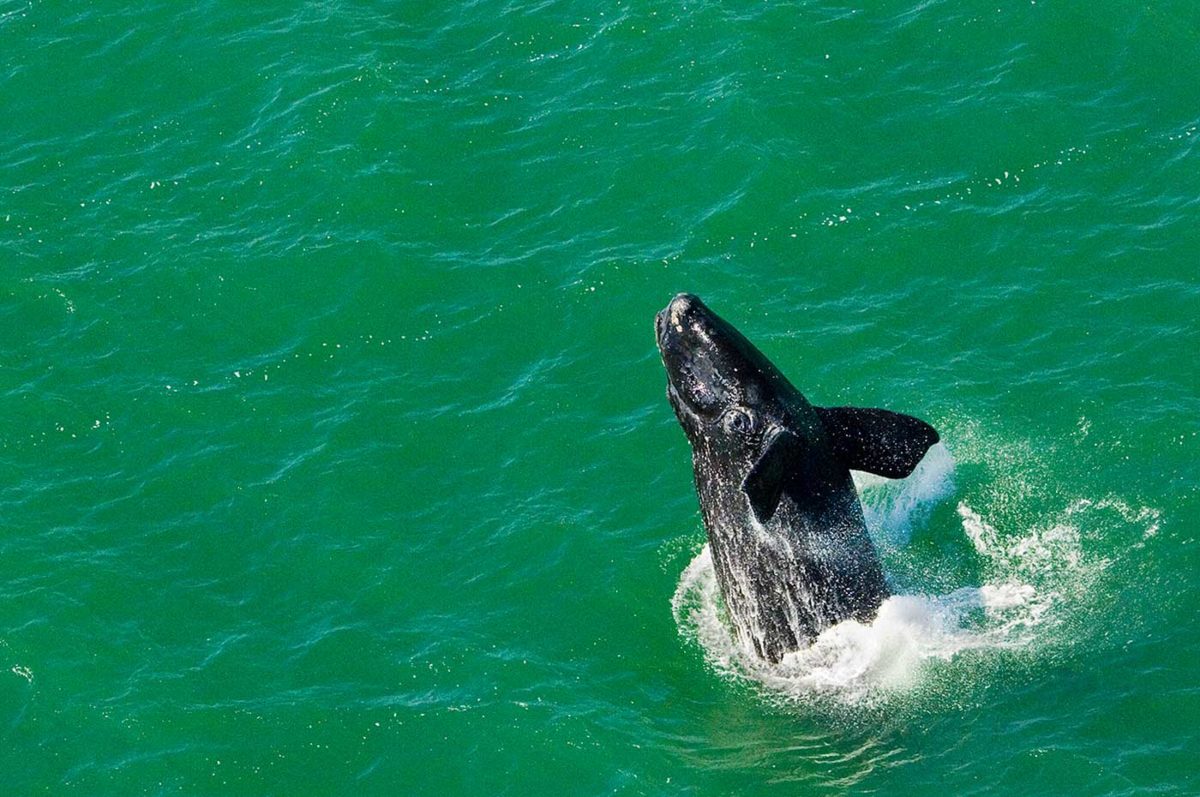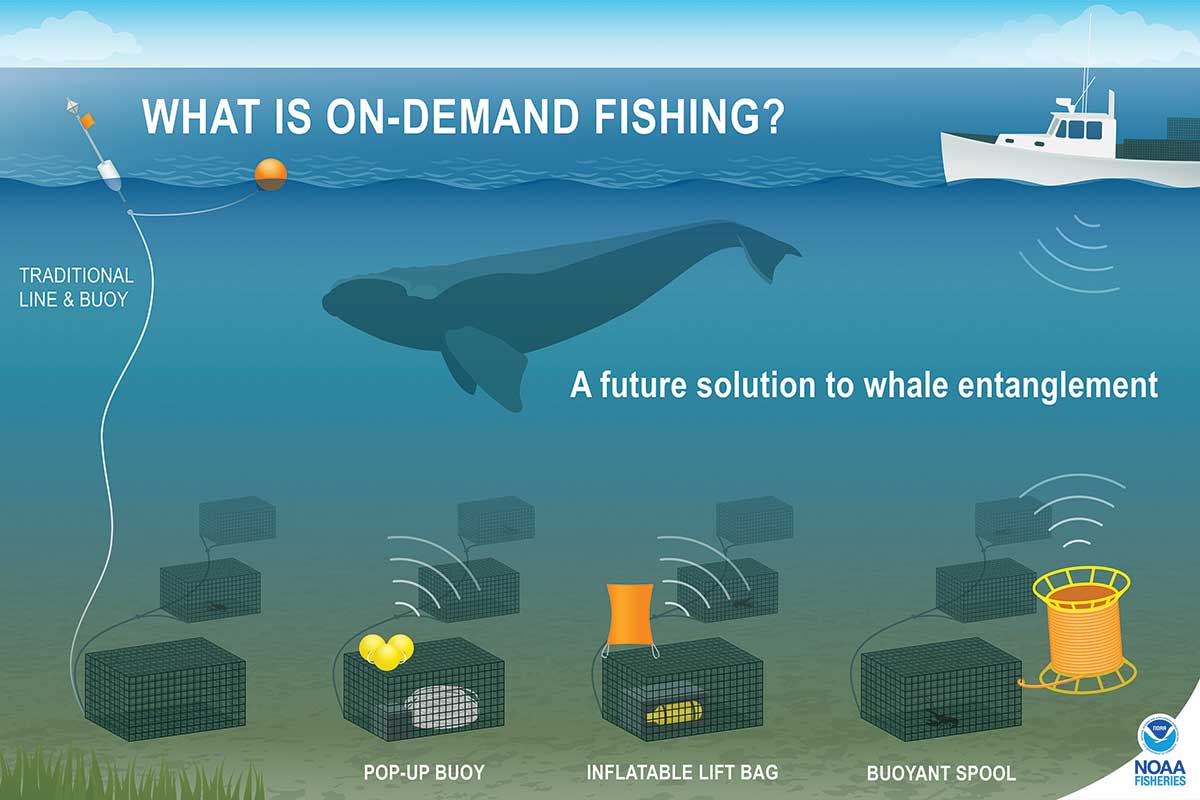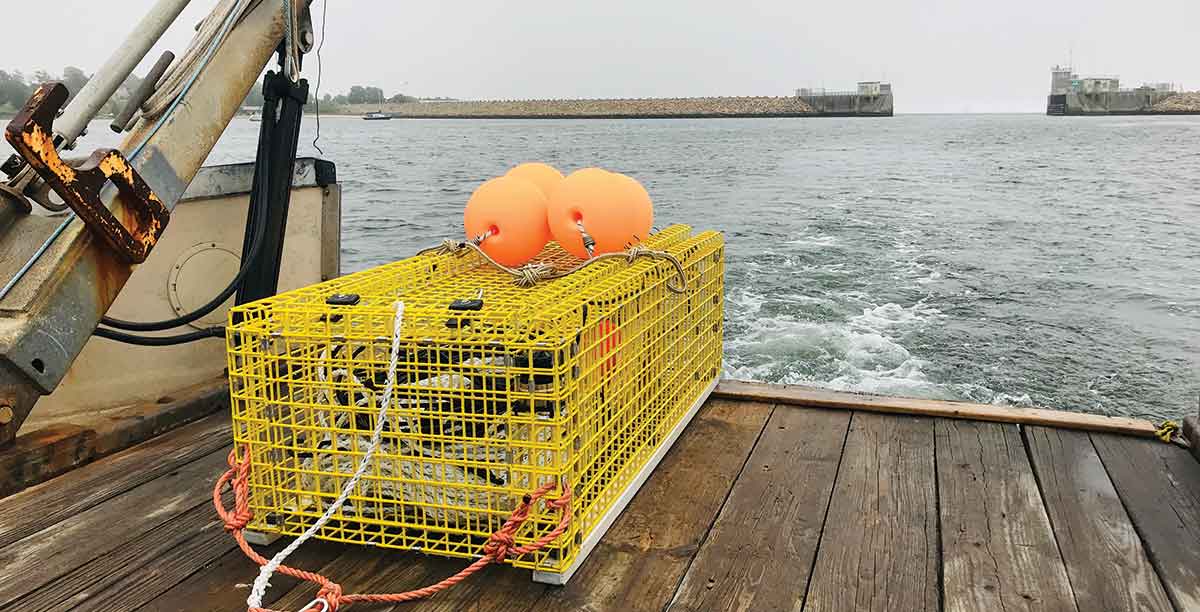Humans have long posed a threat to North Atlantic right whales. But that threat has become more acute as rapidly warming waters have changed where whales can find their primary food sources. Today, right whales forage in places they were not seen 10, 15, or even 20 years ago – both farther north and farther south – as they pursue their prey. Right whales’ risks of harm from humans, especially fishing gear and vessel strikes, have increased as a result.
Fewer than 350 North Atlantic right whales remain on the planet today, and that makes an encounter with one a rare experience. Yet, sadly, the entanglement scars that about 85% of these precious creatures carry on their bodies are far from rare.
The species is in crisis – earning the status of critically endangered two years ago. As a leader in the fight to save right whales, CLF uses a multipronged approach – including the law, policy, and science – to force the federal government to respond to the crisis with the urgency it deserves. No one wants to see this species go extinct in their lifetime, and public support for their protection is high.
At the same time, some fishermen fear that the measures taken to protect right whales so far – including closing areas to lobstering when whales are present – could undermine their businesses.
But a solution is in the works that could allow whales and lobstermen to coexist: ropeless fishing gear.

What Is Ropeless Fishing Gear?
Currently, the most effective way to reduce the risk of accidental entanglement in gear is to close certain areas to fishing when high numbers of whales are present. But what if fishermen could safely fish, without fixed ropes, in places where right whales congregate? After all, fewer ropes mean fewer whales of all species getting painfully – and often lethally – entangled.
That’s where ropeless fishing gear comes in. Ropeless systems (also known as pop-up, buoyless, or on-demand systems) allow lobstermen to retrieve traps from the ocean floor without using the traditional, persistent vertical lines that entangle marine wildlife. CLF advocates have been vocal proponents of ropeless fishing systems because they offer a potential long-term solution to the entanglement crisis. But what does it actually mean to go ropeless?

Ropeless Fishing Gear Creates a Safer Ocean
Ropeless fishing gear has been discussed for decades. But over the last few years, a small group of researchers, engineers, lobstermen, and conservationists – including CLF – have come together to help make it a reality.
Through a ropeless pilot project – now in its third year – lobstermen have successfully deployed and hauled thousands of traps from the water. So far, the traps have used a hybrid ropeless system, but they will be fully ropeless this summer. For CLF Senior Attorney Erica Fuller and her colleagues, it has been exciting to witness this unusual group of people come together to explore solutions.
“In addition to the fishermen, there’s an engineer who repeatedly modifies his cages while patiently fielding questions. There’s a scientist who tirelessly drives up the coast gathering data. And there are even regulators collaborating,” says Fuller. “The goal is to create a safer ocean. And, so far, this study has shown that this technology can make that feasible.”
But, admits Fuller, there is still work ahead to get these ropeless systems ready for primetime.

Ropeless Fishing Gear Must Work for Lobstermen
For ropeless systems to truly work for lobstermen, boat captains and crew must feel confident that they can safely and successfully use the gear. To date, fishermen have piloted ropeless fishing gear safely under most real-world conditions. But additional trials are needed to confirm their safety in all types of weather, currents, and distances from shore.
As efforts to test ropeless fishing gear move forward, direct input from lobstermen will remain invaluable. In a video on ropeless gear created by NOAA (see below), one fisherman, Marc Palombo, shares how
he has dedicated countless hours to testing and providing feedback on this technology: “It’s exciting to lead the charge on something that could change the face of lobster fishing and to be that person giving the input.”
Palombo, a proud third-generation lobsterman, has fished in New England waters for over 40 years. He knows that adapting his gear could make an ocean of difference for right whales.
“Somewhere down the line, it could be that I’m going to be having to fish in a closed area with ropeless gear. And I feel totally confident that if that was the case, I’m good. We are trying to save a species, and how we fished before is not the way we’re going to fish in the future,” he says in the video.
The Road Ahead
Lobstermen like Palombo who make their living on New England’s ocean have deep respect for the creatures that call it home. No one feels good about harming a right whale, especially accidentally. And that’s why it’s so critical to get this transition to ropeless fishing gear right.
Challenges remain to make this innovative gear widely available, but it is on the right track. Ropeless fishing gear and software need more modifications so fishermen can confidently locate and retrieve their traps. And the costs for the innovative gear must come down. Federal and philanthropic funding will be vital to making this gear affordable. The federal government also must grant additional permits so that more lobstermen can test this gear.
CLF and our partners are among those pushing federal agencies and Congress to invest in urgently needed research to advance these technologies – even as we continue to fight for additional protections for right whales through the courts.
Palombo and his fellow gear testers have shown that this technology is feasible – and it’s our best option for allowing fishermen and right whales to coexist.
“It’s going to take a few more gear modifications. It’s going to take more money. It’s going to take more time and more sweat equity,” says Fuller. “But I know that we can get there.”
STAY ACTIVE
Your support has already helped CLF hold federal regulators accountable for failing to protect North Atlantic right whales. But we have much more work to do to save this species. Learn more about the rarest whale on Earth and how your continued commitment makes a difference.
